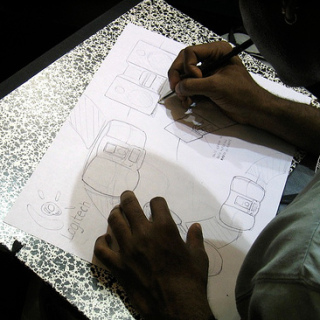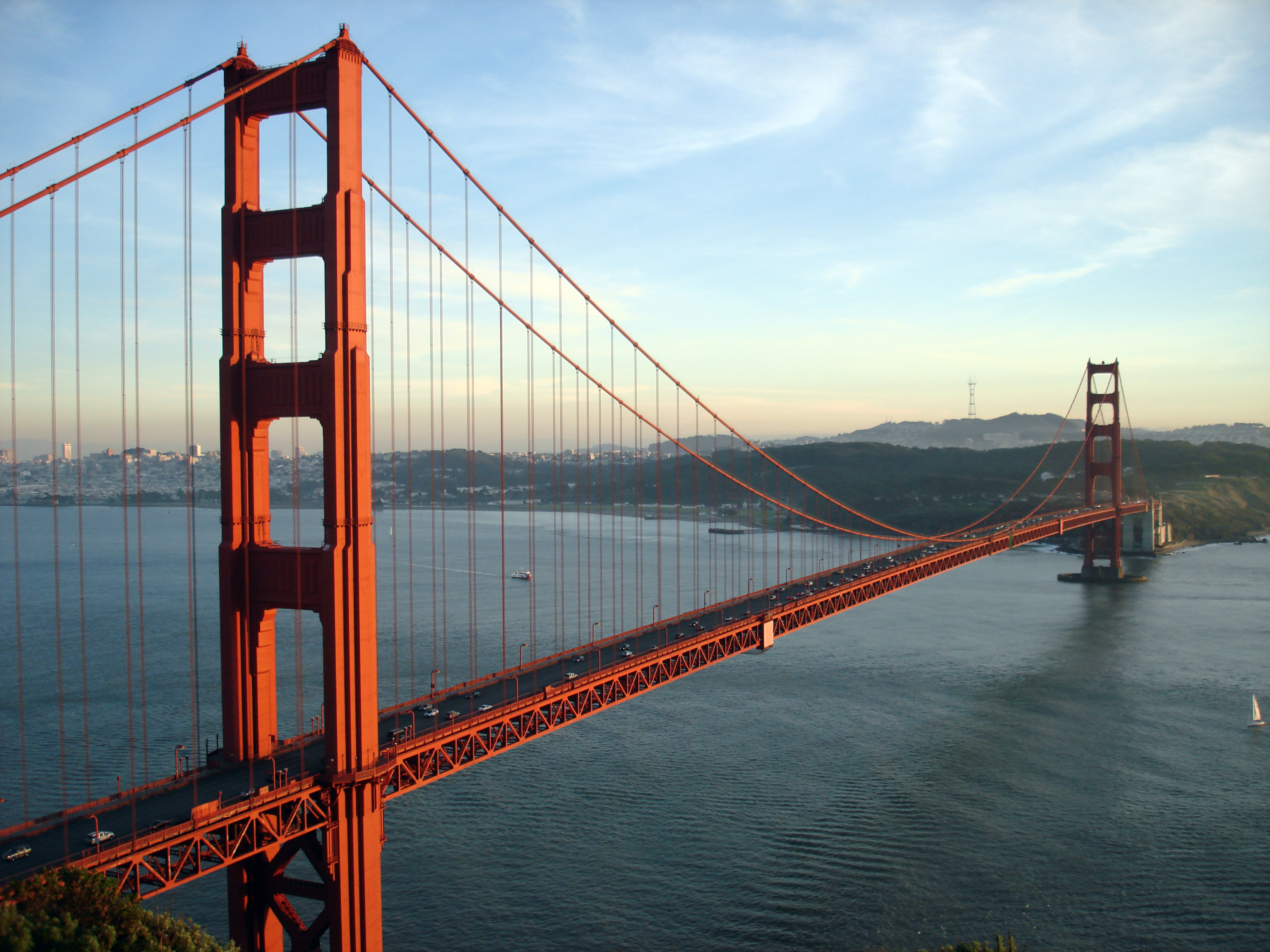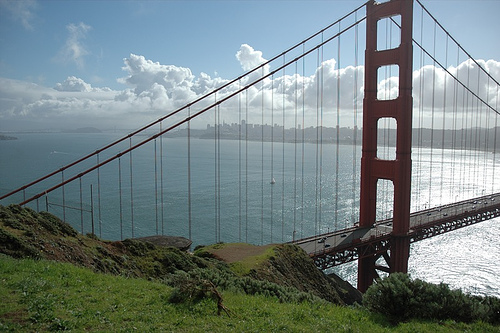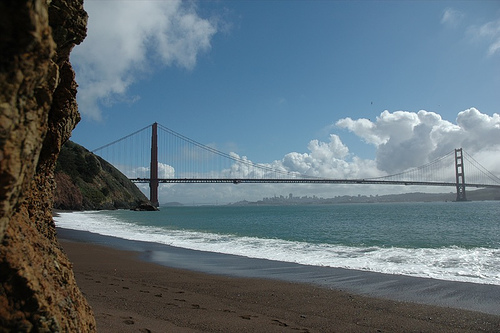Join Communities
 Learn about Jazz & More |
 Enhance your Writing Skills |
 Become a Photographer |
 Handigifts |
 Love the Art |
Ask The Experts

Seven Wonders of the Modern World:
Golden Gate Bridge
The Golden Gate Bridge is a suspension bridge spanning the Golden
Gate, the opening of the San Francisco Bay onto the Pacific
Ocean. As part of both U.S. Route 101 and State Route 1, it
connects the city of San Francisco on the northern tip of the San
Francisco Peninsula to Marin County.
The Golden Gate Bridge had the longest suspension bridge span in
the world when it was completed in 1937, and has become an
internationally recognized symbol of San Francisco and
California. Since its completion, the span length has
been surpassed by eight other bridges. It still has the second
longest suspension bridge main span in the United States, after
the Verrazano-Narrows Bridge in New York City.
The Design, Finance and
Construction
Joseph Strauss was the Chief Engineer in charge
of overall design and construction of the bridge project.
However, because he had little understanding or experience with
cable suspension designs, responsibility for much of the
engineering and architecture fell on other experts.
The Golden Gate Bridge and Highway District was incorporated in
1928 as the official entity to design, construct, and finance the
Golden Gate Bridge. However, after the Wall Street Crash of 1929,
the District was unable to raise the construction funds, so it
lobbied for a $35 million bond measure.
The bonds were approved in November 1930, by votes in the
counties affected by the bridge. The construction budget at the
time of approval was $30.1 million. However, the District was
unable to sell the bonds until 1932, when the founder of San
Francisco-based Bank of America agreed on behalf of his bank to
buy the entire issue in order to help the local economy.
Construction began on 5 January 1933. The
project cost more than $35 million. Strauss remained head of the
project, overseeing day-to-day construction and making some
groundbreaking contributions. He innovated the use of movable
safety netting beneath the construction site, which saved the
lives of many otherwise-unprotected steelworkers. Of eleven men
killed from falls during construction, ten were killed when the
net failed under the stress of a scaffold that had fallen.
The project was finished by April 1937, $1.3
million under budget.

Aesthetics
Despite its red appearance, the color of the bridge is officially
an orange vermilion called international orange. The color was
selected by consulting architect Irving Morrow because it blends
well with the natural surroundings yet enhances the bridge's
visibility in fog.
The bridge is widely considered one of the most beautiful
examples of bridge engineering, both as a structural
design challenge and for its aesthetic appeal. It was declared
one of the modern Wonders of the World by the American Society of
Civil Engineers
Aesthetics was the foremost reason why the first design of Joseph
Strauss was rejected. Upon re-submission of his bridge
construction plan, he added details, such as lighting, to outline
the bridge's cables and towers.
The Golden Gate Bridge has a similar sister bridge in Lisbon,
Portugal.
References / Image Credits:
Wikipedia,
Wikimedia, Famous
SAE Alumni,
Wikimedia
Ask The Experts
All time most popular tags


Post Comments